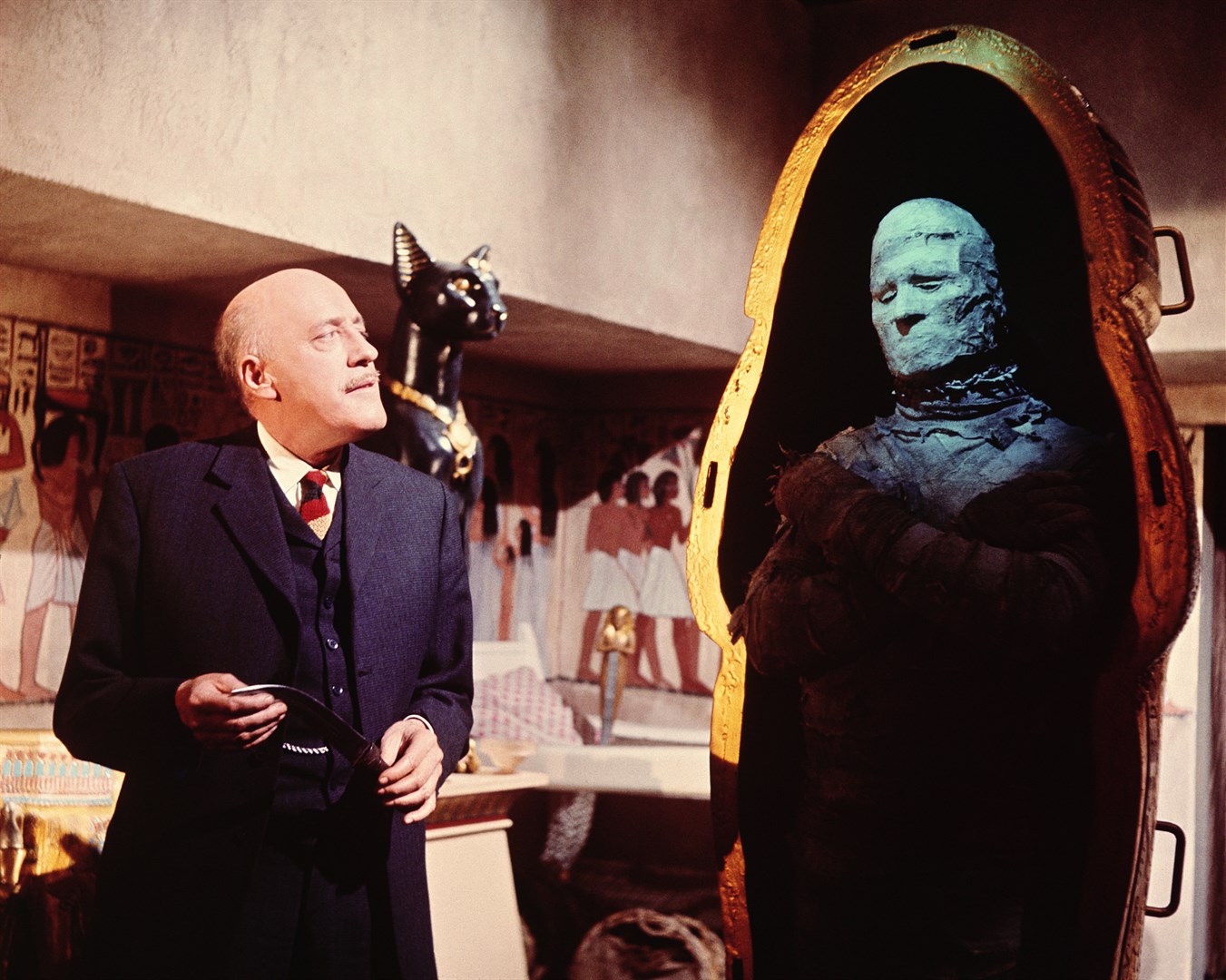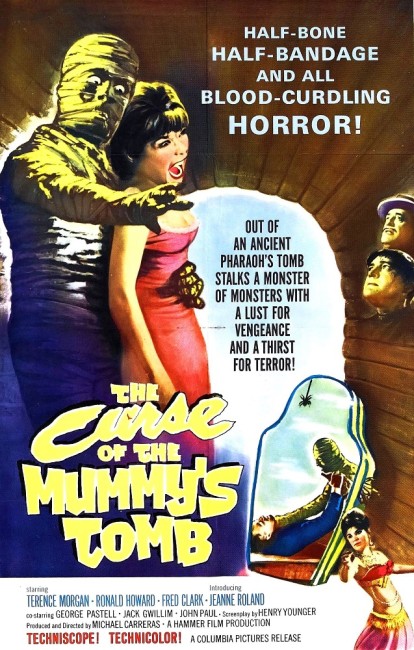Crew
Director/Producer – Michael Carreras, Screenplay – Henry Younger [Michael Carreras], Photography – Otto Heller, Music – Carlo Martelli, Makeup – Roy Ashton, Production Design – Bernard Robinson, Technical Advisor – Andrew Low. Production Company – Hammer/Swallow Productions.
Cast
Terence Morgan (Adam Beauchamp), Ronald Howard (John Bray), Jeanne Roland (Annette Dubois), Fred Clark (Alexander King), Jack Gwillim (Sir Giles Dalrymple), Dickie Owen (The Mummy), George Pastell (Hashmi Bey), Michael Ripper (Achmed)
Plot
In 1900, an archaeological expedition to Egypt uncovers the tomb of the pharaoh Ra-Antef, killed 3000 years before by his brother Be, a sorcerer. Alexander King, the vulgar American showman who financed the expedition, announces to the disgust of the archaeologists that he is going to take the artifacts on tour around the world. However, once they return to England the mummy disappears from the exhibition. It then reappears to slaughter the members of the expedition one by one.
There are few horror films that seem automatically destined to B-programmer status simply by their themes – the werewolf film fairly much so, the mummy film however without any doubt. Hammer Films conducted a good remake of The Mummy (1959) under Terence Fisher, which did a fine job of updating the classic monster into Hammer’s milieu of Victorian repression. However, Hammer’s subsequent mummy efforts, The Mummy’s Shroud (1967) and the The Curse of the Mummy’s Tomb here, were utterly routine. [The sole exception was Hammer’s quite interesting Blood from the Mummy’s Tomb (1971)].
Michael Carreras’s direction is crude and colourless, failing to enervate the scenario with any horror – although an opening containing the severing of a man’s hand has some crude impact. The mummy, routinely made up and played by a stocky stuntman, is unconvincing. Even though a twist ending shows the mummy is not the real villain of the piece, the film seems stuck with and unable to unhitch itself from the need to conduct a routine mummy’s revenge story.
The pedestrian plot is buoyed somewhat by the usual plush Hammer production values (even though we see nothing of the supposed expedition to Egypt), but this only shows that a Hammer period film without the florid stylism of a Terence Fisher can be deadly static.

The cast are a singularly dull bunch – heroine Jeanne Roland hardly displays any emotion at all. Fred Clark’s brassy performance as the crass, money-hungry American showman is rather awful, even so is the liveliest thing in the film. He does get some of the more amusing lines – suggesting to an Egyptian belly dancer that he could find a place for her if she could learn to dance ragtime; and a scene where he is introduced to some Turkish candy and decide he wants to exploit, then taking Ronald Howard’s eulogy ‘delightful’ – “That’s it, we’ll call it – Turkish Delight.”
The Curse of the Mummy’s Tomb was one of the handful of films directed by Hammer producer Michael Carreras, grandson of the company’s founder. Carreras’s other genre films as director include Maniac (1963), Slave Girls/Prehistoric Women (1967) and The Lost Continent (1968).

